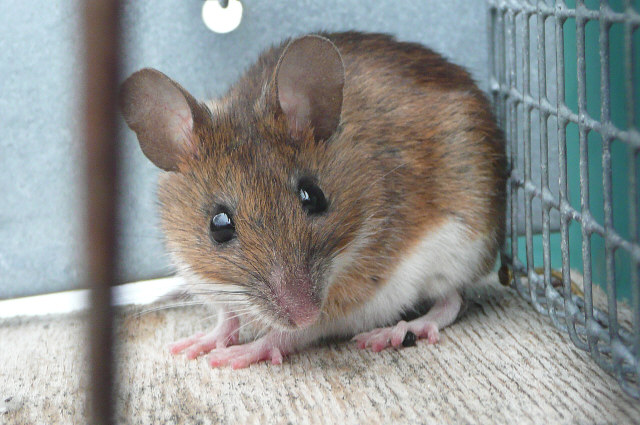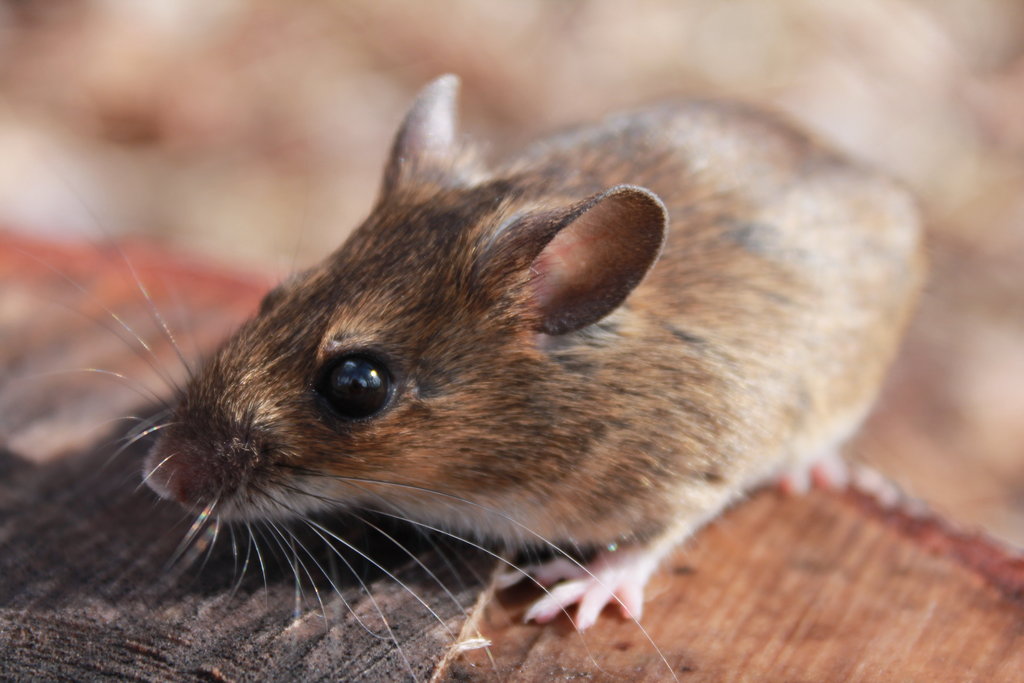House Mouse: (Mus musculus)
The house mouse (mus musculus) is a member of the muridae family. They average between 7 to 10 inches long and their tails are between 2 to 3 inches long, weighing between 4 to 9 ounces.
The house mouse has short fur that is white to gray, light brown or black colored. Its under – parts are whitish gray or light brown. They have 4 toes in on their front feet and 5 on their back feet. Their eyes are small and dark brown in color, its tail and ears are bare. Their teeth are sharp and they use them for gnawing. It also has a very strong foul smell. They are found throughout the United States, including Florida although they are not native to Florida. They live in close proximity with people and can be found in and around residences, warehouses, grocery stores, restaurants and in agricultural fields or buildings. They also inhibit fields, pastures, wooded areas and along side roads in ditches.
The house mouse will consume just about any kind of food. Their primary diet consists of seeds, grains, plants, insects, pet food and garbage.
The house mouse is not entirely solitary, and have two types of social behavior depending on the environment and location in which they are in. One behavior is known as commensal, which is when there is an excessive abundance of food and water that results in increased populations, that causes smaller home ranges, forcing them to live closer together. This usually occurs when they are living in close proximity to people. Male on male aggression still occurs in commensal mice groups mainly for defending its female mates and territory, although there is less female to female aggression due to the strong food supply. The second social behavior is called non – commensal mice groups, which are in environments that are limited with food and water sources. These environments include open fields, pastures and wooded areas, forcing them to increase there territoriality ranges. In this group there is more female on female and male on male aggression. Becoming very territorial and defending it from any intrudes. Although in either group they are very territorial and the groups usually consist of one alpha male with several females and their offspring. They are mainly nocturnal, but can be seen during the day when food is scarce. They can walk, run or stand up and are capable of jumping and swimming. They have keen hearing and smelling scenes. Their average life span is less than 1 year in the wild, however in captivity as pets they can live up to 2 or 3 years. House mice do not burrow, they create nests out of soft materials they find. They nest in wood piles, under floors, in attics and other concealed locations. House mice mainly communicate with each other through pheromones (scent) and using ultrasonic sounds. They can produce some noises, which can be heard by humans.The house mouse usually breeds throughout the year. The average litter size is between 6 to 8, but they can have up to 13. One female can produce 5 to 10 litters a year, allowing the population to rapidly increase. Its gestation period is approximately 19 to 21 days. When the young are born their eyes and ears are sealed shut, and they are fur-less. They are completely furred by 14 days old. Their eyes and ears begin to open after 2 weeks. By the time the young reach 3 to 4 weeks the mother has them completely weaned them and they begin to emerge from the nest.
The house mouse is known to carry several diseases such as tularemia, leptospirosis, salmonellosis and hantavirus pulmonary syndrome. They can also transmit these diseases to humans.
House mice do cause damage to homes by gnawing through walls, electrical wiring, plumbing, gas lines, doors, window sills, ceilings and floors. They also cause a considerable amount of damage to agriculturally by destroy crops and contaminating live-stocks food and water sources.


